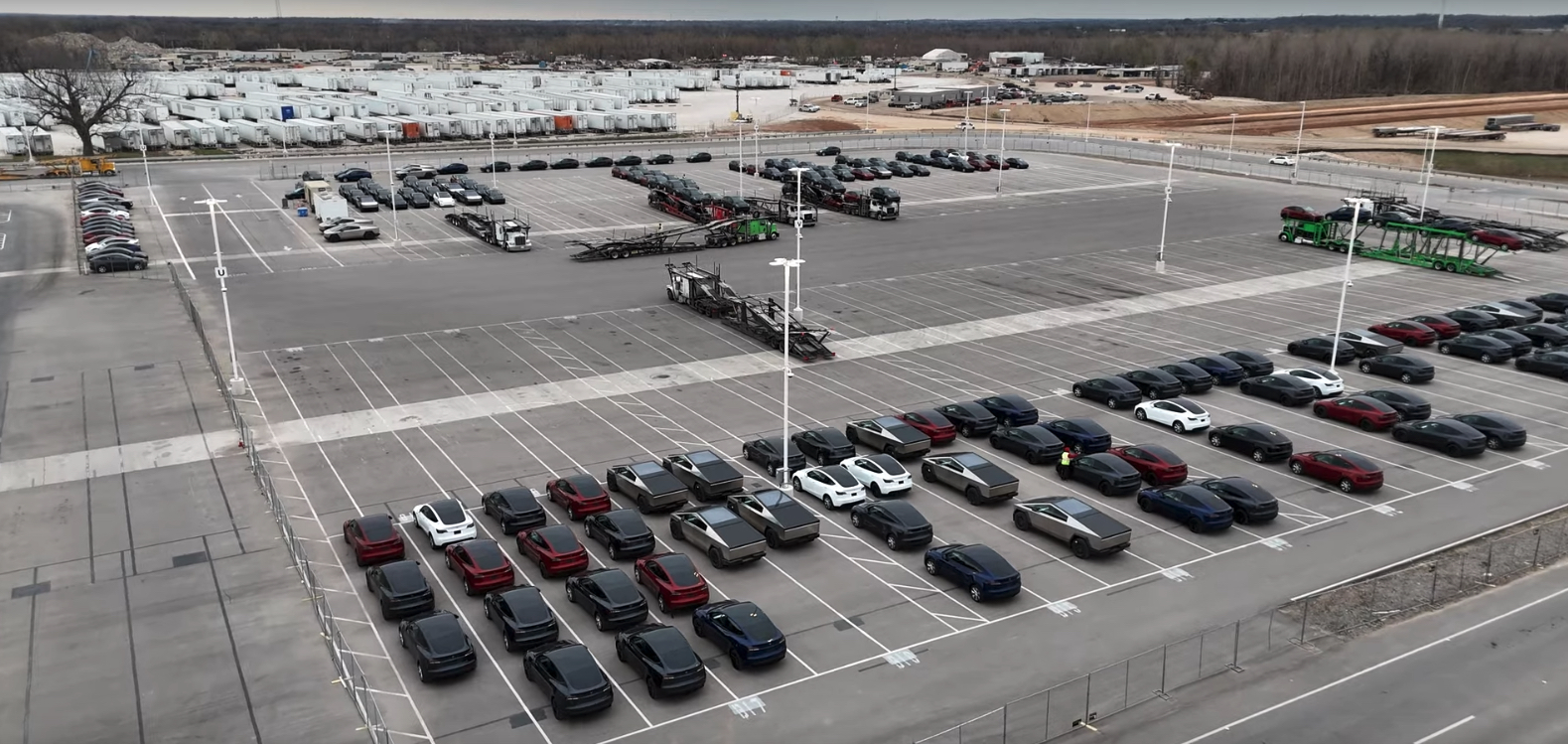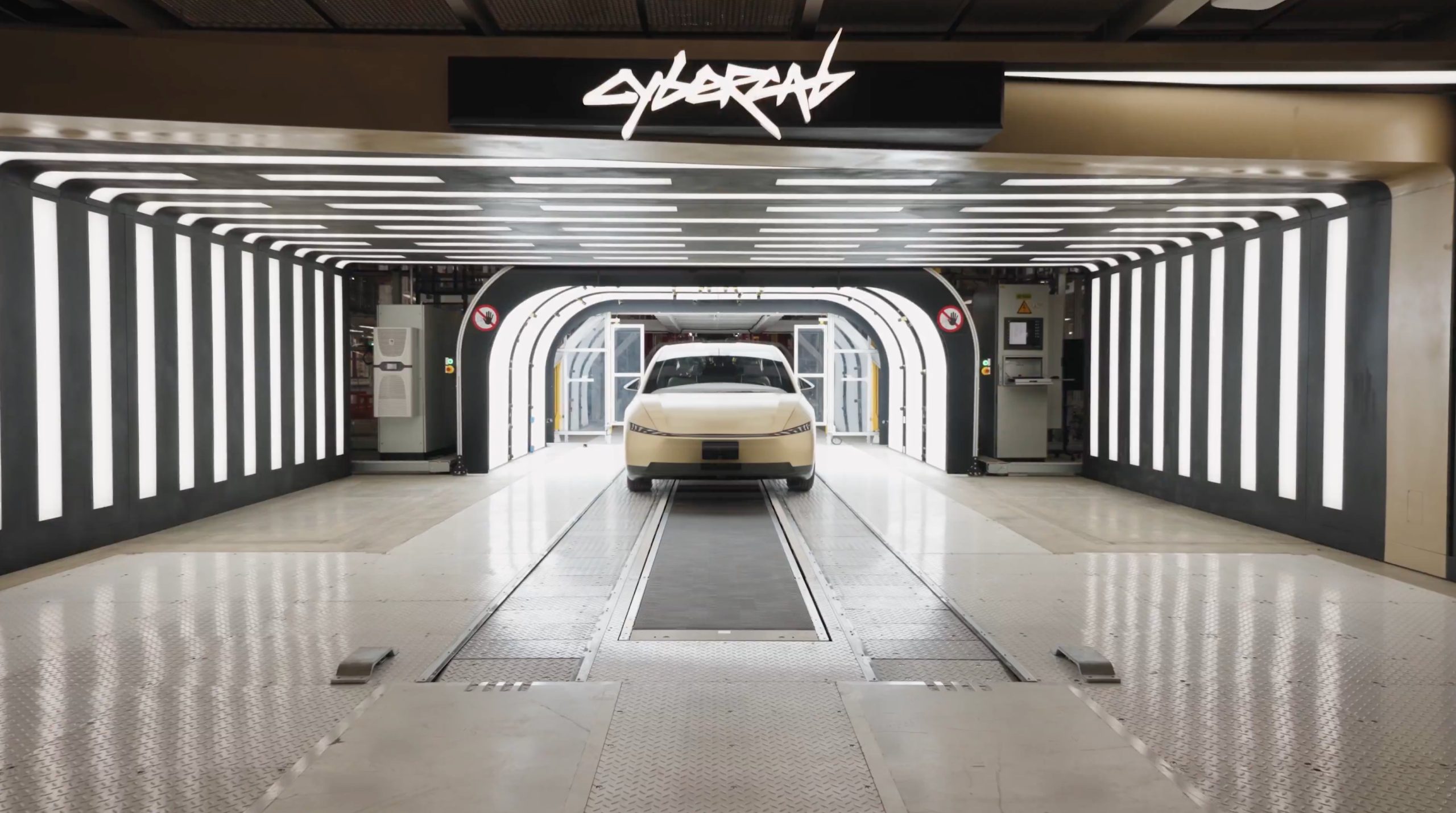News
Tesla’s vehicles led U.S. EV sales again last quarter: report
Tesla, Ford, and Chevrolet’s models led the pack in Q1, while more new EVs hit the road than ever.

Recent data has shown that Tesla’s Model Y and Model 3 remained the top-selling electric vehicle (EV) models in the U.S. in the first quarter, despite a decline in overall sales in the market.
As detailed in the latest Kelley Blue Book EV sales report, shared by Cox Automotive on Thursday, Tesla’s Model Y and Model 3 outsold the next several models combined during the first quarter, while the Cybertruck was the tenth best-selling EV overall.
Tesla sold 64,051 Model Y units, representing a 33.8 percent drop year over year, along with selling 52,520 Model 3 units, marking a 70.3 percent increase year over year, to outpace the next several models combined. The Tesla Cybertruck sold 6,406 units, while the Model S and X sold 1,280 and 3,843 units, respectively.
Tesla also launched a new version of the Model Y in the first quarter, likely explaining at least a part of the decline, though the brand also faces continued pressure from the public, as many have targeted stores and vehicles in protesting Elon Musk and the Trump administration.
Meanwhile, the Ford Mustang Mach-E, the Chevy Equinox EV, and the Honda Prologue followed and made up the rest of the top five, with 11,607, 10,329, and 9,561 units sold, respectively. A number of models were also introduced to the market last year, such as the Porsche Macan, the VW ID.Buzz, and Volvo’s EX30 and EX90 models. Honda and Acura also added over 14,000 EVs to U.S. roads, marking an increase from having no products in Q1 2024.
Additionally, many models such as the Chevy Equinox EV, the Honda Prologue, and the VW ID.4 all climbed in the rankings from the full-year 2024 EV sales list, and it will be interesting to see how these and other emerging models hold as the year rolls on.
Cox also points out that Tesla’s overall sales were down 8.6 percent from last year’s first quarter, while General Motors (GM) sold over 30,000 EVs across its brands to lead the sector in sales growth.
See the full list of BEVs sold below, as ranked by volume. You can also check out the full Q1 EV sales data from Cox Automotive here, or read the firm’s press release on the report here.
READ MORE ON U.S. EV SALES: Tesla average transaction prices (ATP) rise in March 2025: Cox Automotive
EV models sold in the U.S. in Q1 2025, ranked by volume
- Tesla Model Y: 64,051
- Tesla Model 3: 52,520
- Ford Mustang Mach-E: 11,607
- Chevrolet Equinox EV: 10,329
- Honda Prologue: 9,561
- Hyundai Ioniq 5: 8,611
- VW ID.4: 7,663
- Ford F-150 Lightning: 7,187
- BMW i4: 7,125
- Tesla Cybertruck: 6,406
- Chevrolet Blazer EV: 6,187
- Toyota BZ4X: 5,610
- Rivian R1S: 5,357
- Cadillac Lyriq: 4,300
- Acura ZDX: 4,813
- Nissan Ariya: 4,148
- Tesla Model X: 3,843
- Ford E-Transit and Kia EV9 (tied): 3,756
- Kia EV6: 3,738
- BMW iX: 3,626
- GMC Hummer Truck/SUV: 3,479
- Porsche Macan: 3,339
- Hyundai Ioniq 6: 3,318
- Audi Q6 e-tron: 3,246
- Subaru Solterra: 3,131
- Chevrolet Silverado: 2,383
- Jeep Wagoneer EV: 2,595
- Nissan Leaf: 2,323
- Dodge Charger EV: 1,947
- Rivian R1T: 1,727
- Cadillac Escalade EV: 1,956
- VW ID.Buzz: 1,901
- BMW i5: 1,899
- Audi Q4 e-tron: 1,874
- Mercedes EQB: 1,622
- Cadillac Optiq: 1,716
- Rivian EDV500/700: 1,469
- Lexus RZ: 1,453
- Tesla Model S: 1,280
- GMC Sierra EV: 1,249
- Volvo EX30: 1,185
- Kia Niro: 1,162
- Porsche Taycan: 1,019
- Volvo EX90: 1,000
- Hyundai Kona EV: 914
- BMW i7: 888
- Mercedes EQE: 742
- Genesis GV60: 733
- Genesis GV70: 712
- Mini Countryman: 693
- Mercedes EQE: 742
- Audi Q8 e-tron: 535
- Mercedes G-Class and EQS (tied): 509
- Jaguar I-Pace: 381
- Volvo C40: 315
- Chevrolet Brightdrop 400/600: 274
- Audi e-tron: 250
- Volvo XC40: 218
- Mercedes E-Sprinter: 90
- Genesis G80: 51
- Chevrolet Bolt: 13
- Mini Cooper: 3
*Additional EV Models: 5,930
*The additional EV models category is likely made up of low-volume, luxury, and niche EV makers, such as those from Lucid and Polestar. However, at the time of writing, Cox Automotive has not yet responded to Teslarati’s request for comment on which vehicles were excluded.
Top 10 EV sellers by brand in the U.S. in Q1 2025
- Tesla: 128,100
- Ford: 22,500
- Chevrolet: 19,186
- BMW:13,538
- Hyundai: 12,843
- VW: 9,564
- Honda: 9,561
- Kia: 8,656
- Rivian: 8,553
- Cadillac: 7,972

News
Tesla Europe rolls out FSD ride-alongs in the Netherlands’ holiday campaign
The festive event series comes amid Tesla’s ongoing push for regulatory approval of FSD across Europe.

Tesla Europe has announced that its “Future Holidays” campaign will feature Full Self-Driving (Supervised) ride-along experiences in the Netherlands.
The festive event series comes amid Tesla’s ongoing push for regulatory approval of FSD across Europe.
The Holiday program was announced by Tesla Europe & Middle East in a post on X. “Come get in the spirit with us. Featuring Caraoke, FSD Supervised ride-along experiences, holiday light shows with our S3XY lineup & more,” the company wrote in its post on X.
Per the program’s official website, fun activities will include Caraoke sessions and light shows with the S3XY vehicle lineup. It appears that Optimus will also be making an appearance at the events. Tesla even noted that the humanoid robot will be in “full party spirit,” so things might indeed be quite fun.
“This season, we’re introducing you to the fun of the future. Register for our holiday events to meet our robots, see if you can spot the Bot to win prizes, and check out our selection of exclusive merchandise and limited-edition gifts. Discover Tesla activities near you and discover what makes the future so festive,” Tesla wrote on its official website.
This announcement aligns with Tesla’s accelerating FSD efforts in Europe, where supervised ride-alongs could help demonstrate the tech to regulators and customers. The Netherlands, with its urban traffic and progressive EV policies, could serve as an ideal and valuable testing ground for FSD.
Tesla is currently hard at work pushing for the rollout of FSD to several European countries. Tesla has received approval to operate 19 FSD test vehicles on Spain’s roads, though this number could increase as the program develops. As per the Dirección General de Tráfico (DGT), Tesla would be able to operate its FSD fleet on any national route across Spain. Recent job openings also hint at Tesla starting FSD tests in Austria. Apart from this, the company is also holding FSD demonstrations in Germany, France, and Italy.
News
Tesla sees sharp November rebound in China as Model Y demand surges
New data from the China Passenger Car Association (CPCA) shows a 9.95% year-on-year increase and a 40.98% jump month-over-month.

Tesla’s sales momentum in China strengthened in November, with wholesale volumes rising to 86,700 units, reversing a slowdown seen in October.
New data from the China Passenger Car Association (CPCA) shows a 9.95% year-on-year increase and a 40.98% jump month-over-month. This was partly driven by tightened delivery windows, targeted marketing, and buyers moving to secure vehicles before changes to national purchase tax incentives take effect.
Tesla’s November rebound coincided with a noticeable spike in Model Y interest across China. Delivery wait times extended multiple times over the month, jumping from an initial 2–5 weeks to estimated handovers in January and February 2026 for most five-seat variants. Only the six-seat Model Y L kept its 4–8 week estimated delivery timeframe.
The company amplified these delivery updates across its Chinese social media channels, urging buyers to lock in orders early to secure 2025 delivery slots and preserve eligibility for current purchase tax incentives, as noted in a CNEV Post report. Tesla also highlighted that new inventory-built Model Y units were available for customers seeking guaranteed handovers before December 31.
This combination of urgency marketing and genuine supply-demand pressure seemed to have helped boost November’s volumes, stabilizing what had been a year marked by several months of year-over-year declines.
For the January–November period, Tesla China recorded 754,561 wholesale units, an 8.30% decline compared to the same period last year. The company’s Shanghai Gigafactory continues to operate as both a domestic production base and a major global export hub, building the Model 3 and Model Y for markets across Asia, Europe, and the Middle East, among other territories.
Investor's Corner
Tesla bear gets blunt with beliefs over company valuation

Tesla bear Michael Burry got blunt with his beliefs over the company’s valuation, which he called “ridiculously overvalued” in a newsletter to subscribers this past weekend.
“Tesla’s market capitalization is ridiculously overvalued today and has been for a good long time,” Burry, who was the inspiration for the movie The Big Short, and was portrayed by Christian Bale.
Burry went on to say, “As an aside, the Elon cult was all-in on electric cars until competition showed up, then all-in on autonomous driving until competition showed up, and now is all-in on robots — until competition shows up.”
Tesla bear Michael Burry ditches bet against $TSLA, says ‘media inflated’ the situation
For a long time, Burry has been skeptical of Tesla, its stock, and its CEO, Elon Musk, even placing a $530 million bet against shares several years ago. Eventually, Burry’s short position extended to other supporters of the company, including ARK Invest.
Tesla has long drawn skepticism from investors and more traditional analysts, who believe its valuation is overblown. However, the company is not traded as a traditional stock, something that other Wall Street firms have recognized.
While many believe the company has some serious pull as an automaker, an identity that helped it reach the valuation it has, Tesla has more than transformed into a robotics, AI, and self-driving play, pulling itself into the realm of some of the most recognizable stocks in tech.
Burry’s Scion Asset Management has put its money where its mouth is against Tesla stock on several occasions, but the firm has not yielded positive results, as shares have increased in value since 2020 by over 115 percent. The firm closed in May.
In 2020, it launched its short position, but by October 2021, it had ditched that position.
Tesla has had a tumultuous year on Wall Street, dipping significantly to around the $220 mark at one point. However, it rebounded significantly in September, climbing back up to the $400 region, as it currently trades at around $430.
It closed at $430.14 on Monday.









